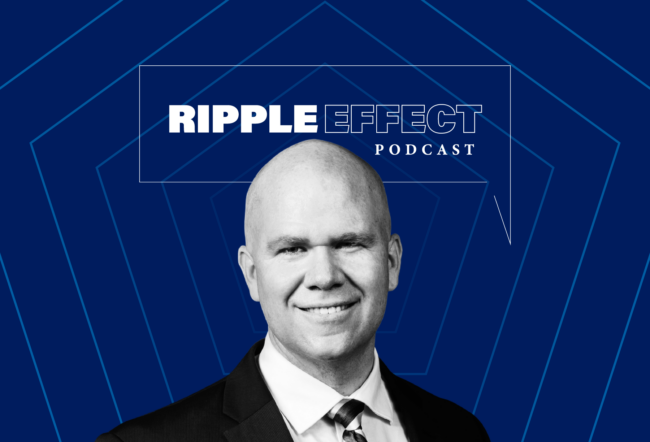Social entrepreneurs and their good deeds have become a hot topic in recent years. But these socially conscious go-getters hardly invented the idea of using talent and money to improve the lives of one’s fellow men and women. Traditional nonprofit organizations have been doing it for a long time
Whether it is bringing the arts to kids or teaching community groups to use technology, nonprofits today are leveraging the skills of millions of paid staffers and volunteers to help others. It is easy to get bogged down quibbling over definitions. But according to some people, the chief difference between a traditional nonprofit and a socially entrepreneurial person or group appears to be the originality of the ideas that the entrepreneur brings to bear on social problems. “A social entrepreneur is a person using entrepreneurial skills to look for new solutions to create social value, not necessarily to make money or create a new product,” says Ben Klasky, executive director of Net Impact, a San Francisco-based network of MBA students and graduates whose mission is “using the power of business to create a better world.”
Klasky, who graduated with an MBA from Stanford in 1998, says that, in his view, “people simply doing nonprofit work are not necessarily doing social entrepreneurship.” Thus, he says, “somebody at the Red Cross is probably not a social entrepreneur unless they’re doing something that’s never been done before.”
Net Impact, itself a nonprofit, has one foot in the world of nonprofits and the other in the orbit of the entrepreneurially minded. Its 7,000 members are spread throughout 80 chapters across the United States. Many of them are studying for their MBAs; others have graduated and are embarked on socially minded careers.
The organization, founded in 1993, uses several methods to encourage young people to have an impact on the world. It organizes an annual conference, which is attended by about 1,000 MBAs. It operates a database to so that members can exchange ideas. And its leadership development program offers classes on topics not usually covered by business schools, such as social entrepreneurship and nonprofit management.
The organization also helps MBA students find summer internships and full-time jobs. The Net Impact Service Corps teams students willing to do pro bono work with social ventures, typically nonprofits, to help them operate more effectively. Students may, for example, work with a nonprofit to write a business plan or devise a marketing strategy. The Service Corps, says Klasky, is one way members can “put all [our] talk into action.”
Some Net Impact members who have earned MBAs go to work for large corporations in areas that allow them to have a social impact, Klasky says. At Ford Motor, for instance, one member of Net Impact works in a division that buys parts for cars from minority-owned companies. Another works at Hewlett-Packard on projects related to environmental sustainability, while yet another is involved with human rights issues at Du Pont. Because they work at major multinationals, Klasky says, these men and women can be thought of as “intrapreneurs.”
Other members of Net Impact have gone to work full-time for nonprofits, such as Juma Ventures, which provides jobs for young people in the San Francisco area in enterprises that Juma owns. Juma’s website notes that “Juma means ‘work’ in the Akan language of Ghana in West Africa.”
The 70-30 Business Model
Encouraging MBAs to work for nonprofits full-time has become more commonplace. One reason is that nonprofits increasingly realize that they can be more successful if they adopt management practices common to for-profit enterprises.
“To survive, a nonprofit needs to be run as a business,” says Evy Schiffman, marketing and communications director at the Community School of Music and Arts (CSMA) in Mountain View, Calif., in the heart of Silicon Valley. Indeed, Schiffman points out that nonprofits in the valley are sometimes referred to as “public benefit corporations” to emphasize that they are increasingly organized and run as if they were businesses.
Since its founding in 1968, CSMA has provided arts education for children and adults of all skill levels and incomes, and has reached more than 300,000 people. It provides private music lessons and classes; art classes, clubs and camps; arts-in-the-schools programs, and community-outreach events. CSMA is in the process of building a Center for Music and Arts Education, which will be the school’s first permanent home in its 35-year history and the first center of its kind in Silicon Valley.
In spite of difficult economic times – especially in the technology-dependent part of the country where CSMA is situated – the school has earned the confidence of its investors based on its “strong business model showing fiscal responsibility, steady growth, and strong and creative management,” Schiffman says. “We have made the case, just as a ‘for-profit’ business would and must, as to why we are a sound investment.”
Schiffman notes that 70% of CSMA’s revenue is earned income, with the rest coming from contributions from foundations, corporations and individuals. “That’s unique compared to other arts and nonprofit organizations,” she explains. “The reason we have [earned income] is we have tuition. Although we are very much dependent on the donations, we have been able to leverage the concept of 70-30 as a very sound business model when we go and ask for donations.”
Schiffman says nonprofit groups and for-profit companies have much in common. “Just as a for-profit business seeks to maximize returns to benefit its shareholders, a nonprofit seeks to maximize its returns to benefit the social welfare of the organization’s constituents and the community as a whole. In the case of the Community School of Music and Arts, our ‘social philanthropy’ involves ensuring that the arts are accessible to all, regardless of age, level, talent, experience or economic resources.”
Nonetheless, nonprofits differ from for-profits in one key way. “What really distinguishes work in the nonprofit sector is that the people have a genuine passion,” she says. “The reality is you’re not getting paid as much money. There has to be a reason [beyond financial considerations] why you are staying.” She adds that nonprofits “are a unique kind of business in that the underlying case of why we ask people to invest in us is based on our mission. It all begins and ends with that.”
Installing the Right Software
The latest in computer technology has become as essential as the latest management techniques to running nonprofits effectively. NPower New York is a nonprofit that specializes in providing technical assistance at low prices to other nonprofits in the New York area. (Affiliates in the NPower network provide the same services in 11 other U.S. cities.)
Barbara Chang, NPower NY’s executive director, says the expansion of the network took place with the help of Microsoft. The software giant had discovered that when it offered to make donations of software programs to nonprofits, the nonprofits were not technologically savvy and would request donations of virtually all software that was offered – whether or not they really needed it – because it was free. Microsoft figured an intermediary technical assistance provider could help the nonprofits understand computer technology and assist them in selecting and installing the right software.
“We not only help nonprofits think through their technology but we have staff who can follow through with hands-on implementation,” Chang says. “When we tell someone they need a stronger Internet connection or a better database, we can help them to do that.” NPower NY’s relationships with its clients are “very much built on a foundation of trust that we will give them the right advice – not advice that will perpetuate ourselves. We’re not a shill for a company or product that sponsors us.”
NPower NY has 170 members. In exchange for dues, members receive discounts on software-training classes offered by NPower NY and by New Horizons, a training partner. They also receive discounts on NPower NY’s consulting services on how to set up a network, design a database or launch a website. Members engaged in consulting projects with NPower NY may also be eligible to apply for software donations.
Some of NPower NY’s members are small nonprofits that need basic technical help. Other projects can be significantly more complex. NPower NY is currently developing an application for the United Way that pre-screens people for food-stamp eligibility..
Chang, who has 20 years’ experience in the nonprofit sector, says that NPower NY charges between $55 and $135 an hour, depending on the nature of the work and the size of the nonprofit, compared with private-sector rates of $150 to $180 an hour. “We work off a sliding-fee scale. Very small nonprofits get a larger discount. All rates are underwritten by the foundation support we get, so even the largest nonprofits get a discount [from market rates]. We’re constantly analyzing the market to make sure we’re priced accordingly.”
Like other nonprofits, Chang says NPower NY can only operate effectively if it adopts a certain for-profit mentality. “We don’t like to use words like ‘profit’ or ‘earned revenues,’ but these terms are becoming more a part of what we do. We have to show outcomes. We have to measure our impact and be savvy business people and keep track of revenues and expenses … We’re running a business here. I look at my P&L [profit-and-loss statement] and my balance sheet.”
Another organization that serves as a bridge between the for-profit and nonprofit worlds is Gifts In Kind International, based in Alexandria, Va. The organization was founded in 1983 to encourage companies to donate newly-manufactured products to nonprofits. Launched with a product donation from 3M, Gifts In Kind today is the eighth largest charity in the United States. In exchange for donations, manufacturers and retailers are eligible for sizeable tax deductions.
Last year, Gifts In Kind distributed $840 million in newly manufactured products to more than 200,000 charitable nonprofits worldwide. It serves as the strategic philanthropic partner for the product-giving programs of 40% of the companies in the Fortune 500, including, for example, IBM, Hewlett-Packard, Maytag, Pella Windows, Home Depot, Lowe’s, Office Depot, Bed Bath and Beyond, and Williams Sonoma.
Despite the economic downturn, Gifts In Kind has continued to meet its goals for double-digit growth in the value of products donated. “We have grown 35% a year for the last 10 years,” says Susan Corrigan, the organization’s president and CEO. Gifts In Kind also has been successful in encouraging companies to support its efforts. “Every year we bring on 20% new donors and convert them to permanent donors.”
Gifts In Kind is one of the most cost-efficient charities in the world, according to Corrigan, operating at less than 1% of the value of products, goods and services contributed annually.
In addition to new products, Gifts In Kind also arranges for donations of products from inventory that a manufacturer or retailer cannot sell as new. Say a customer returns a ream of typing paper to Office Depot with several sheets missing because he or she did not like the weight or texture of the paper.
In the past, “all of that returned merchandise had to be pulled back to distribution centers and the company had to figure out whether to return the product to the manufacturer, sell it on the secondary market or destroy it,” Corrigan says. “But if they give it to charity they may qualify for a tax deduction that can be up to twice the cost of the product.”
Among other things, Corrigan attributes the success of Gifts In Kind to an active board of directors and talented finance people. “You need a very strong, independent board, which provides not only a [clear-cut] vision but keeps you on an even keel. Our strategy of operating [at a cost] as low as we can possibly operate” also requires a strong financial team,” she says.
The Book Club Network
One nonprofit that has yet to experience any growth is BookClubSamaritans, which has just begun to get off the ground. BCS is in the process of applying to the IRS for nonprofit status.
The group was co-founded by two women – Eleanor Brown, who holds a PhD in economics from Princeton, and Tracy Carlson, who earned an MBA from Wharton in 1984. The two have been friends since they met in junior high school in Fullerton, Calif.
Brown, an economics professor at Pomona College in California, is a leading researcher in the economics of charitable giving, volunteer labor and nonprofit organizations. Carlson, a former manager of such brands as Hellmann’s/BestFoods Mayonnaise and Wisk laundry detergents, now owns her own consulting company, The Larger View, and has had extensive experience with nonprofits.
The idea behind BCS is simple: Use book club meetings as places to raise money for charities. “We’re both longtime members of book clubs and we have experienced that neighborhood book clubs are powerful communities,” Carlson says. Book clubs, for example, have demographics that are conducive to the types of nonprofits BCS wants to support. Typically, book club members are educated, affluent women who are networked and drawn together by an interest in things intellectual and imaginative.
BCS will focus on charities that Carlson describes as “really creative, smaller organizations. No one needs to tell people that the Salvation Army and Doctors Without Borders are doing good work. We hope to capture the imagination of clubs and introduce them to the notion that giving doesn’t have to be a solitary activity.” One of the charities that BCS wants to raise money for is a group called First Book, whose mission is to give children from low-income families the opportunity to read and own their first new books.
The demographics of book clubs are critical to fundraising in another way, too. “With highly networked women word can travel fast,” Carlson says. “If people have a positive experience with [BCS] they can tell their friends through e-mail, and they can then check our website.”
One of BCS’ strengths is that it will allow people to make one-time donations without opening the floodgates to future solicitations. “Sometimes I really keep myself donating from organizations I’d like to support because I don’t want to be hounded for all eternity,” Carlson says.
What’s more, small donations can add up once they are pooled. “If a book club passes the hat and members chip in $100 and you have 40 clubs, that can make a real difference to small- or medium-size organizations,” Carlson notes. For their part, charities should find working with BCS appealing because Brown and Carlson will do the legwork to track down receptive book clubs so that the nonprofits do not have to spend scarce resources chasing one-time donors.
Setting up a nonprofit has been a learning experience for Carlson and Brown and they are facing management challenges of a kind that are new to them. “We’re learning a lot about the Byzantine laws [affecting nonprofits] and that regulations vary considerably by state. The rules are really complicated. It obviously takes a lot of time. Nobody has quit their day jobs,” Carlson says.
“We’re also trying to tap family and friends,” she adds. “One friend did pro bono legal work. My husband will be doing our [public relations] plan. We’ve gotten advice from an attorney who specializes in nonprofit law. We’re at a life-stage where we know a lot of people who know important things.” In the beginning, BCS will focus its efforts on the regions of California and Massachusetts where Brown and Carlson live.
Carlson does not think the fortunes of BCS will rise and fall with the nation’s economic cycles because she expects book club members to contribute relatively small amounts – between $5 and $20. “As far as the economy goes, we hope we will be relatively insulated.”
Not Your Average Summer Camp
If you wonder whether nonprofits have a social impact, talk to Kathleen Jeanty, 24, of Philadelphia. She will readily tell you that her life changed after she became involved with a New York organization called the National Foundation for Teaching Entrepreneurship (NFTE, pronounced nifty)
“I definitely owe where I am in my life to this organization,” says Jeanty.
NFTE teaches entrepreneurship to low-income kids, ages 11 through 18, so they can become productive citizens. It was founded in 1987 by Steve Mariotti, a former executive and entrepreneur, while he was a public high school teacher in the South Bronx. NFTE began as a dropout prevention and academic performance improvement program, but its mission grew to encompass “entrepreneurial literacy” after Mariotti found that many poor kids loved the idea of getting involved in business. NFTE has worked with more than 65,000 low-income young people around the world. Its programs are offered in public schools, after-school programs at community organizations and summer business camps.
It was at one of those summer camps that Jeanty’s life took a new direction. When she was walking down the hallway one day at Hyde Park High School in Hyde Park, Mass., her career counselor asked her what her plans were for the summer. “I said, ‘Absolutely nothing,’” Jeanty recalls. “She said, ‘How would you like to go to a two-week camp?’”
Jeanty figured she had nothing to lose so she signed up for the camp, which was held at Babson College in Wellesley, Mass. Jeanty found she could not get enough of the idea of entrepreneurship, a word she had never even heard before. She later entered Babson and graduated in 1999. Recently she started her own marketing communications firm called InnerLeaf Communications. She also has been a counselor at NFTE’s summer camps and calls herself an “ambassador” who will sing NFTE’s praises to anyone who will listen.
“I’ve always been an extremely confident person, but NFTE refined my confidence,” she says. “It made me feel like I was absolutely invincible as long as I put my mind to it. There’s a difference between having confidence and being able to use that confidence to your advantage.”



